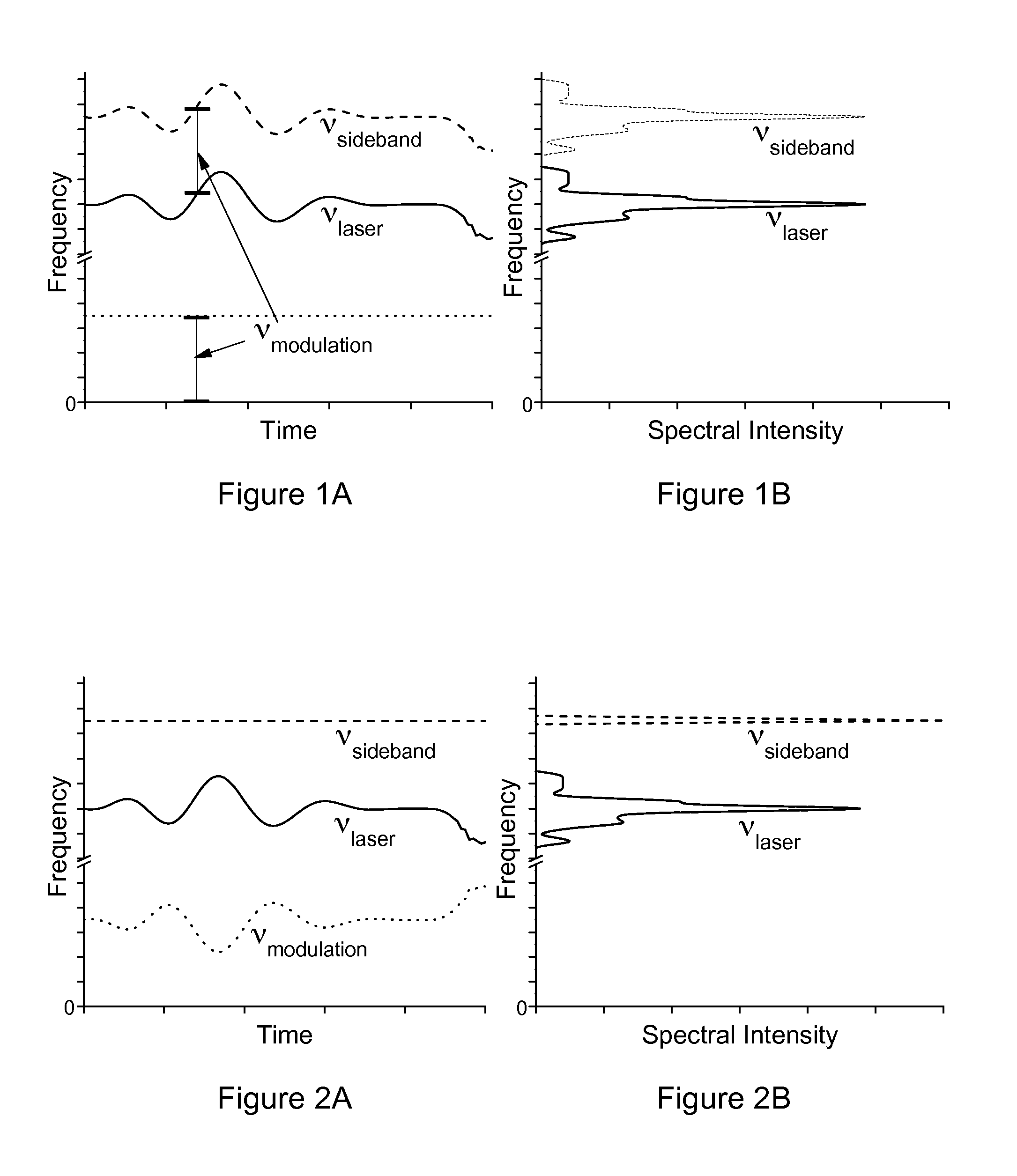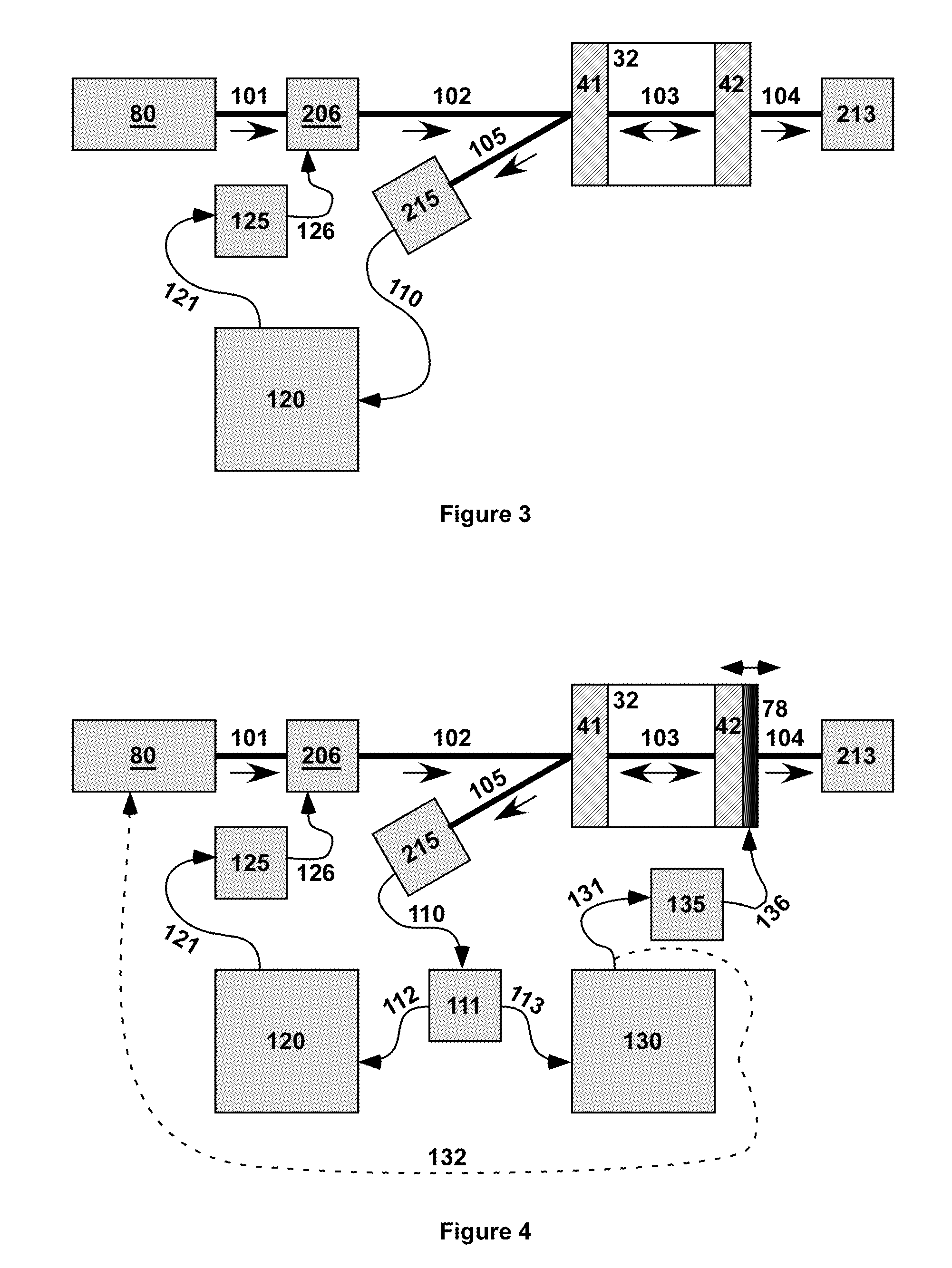Cavity enhanced absorption spectroscopy with a laser modulation side-band frequency locked to the cavity
a laser modulation side-band frequency and enhanced absorption technology, applied in the field of cavity enhanced absorption spectroscopy, can solve the problems of limiting the duty cycle of ceas measurement, waste of remaining laser power, and time-consuming sweeping
- Summary
- Abstract
- Description
- Claims
- Application Information
AI Technical Summary
Benefits of technology
Problems solved by technology
Method used
Image
Examples
Embodiment Construction
[0032]The theory of operation of sideband locking according to the invention is described below with reference to FIGS. 1A, 1B, 2A and 2B. The frequency of laser emission, νlaser, varies in time, as indicated by the solid curve in the graph of FIG. 1A. Rapid variation in the frequency of laser emission is often called “jitter” and slow variation is called “drift.” The laser emission observed over a time long enough to see the variation has a non-trivial spectrum with a non-zero spectral linewidth, as indicated by the solid curve in the graph of FIG. 1B.
[0033]Applying an external phase or frequency modulation with frequency νmodulation creates sidebands at frequencies νlaser+m*vmodulation, where m is one or more integers. If this modulation frequency is fixed, as indicated by the dotted curve in the graph of FIG. 1A, then each sideband is a duplicate of the original laser emission spectrum shifted by m*νmodulation. In sideband locking CEAS according to the invention, the frequency in...
PUM
 Login to View More
Login to View More Abstract
Description
Claims
Application Information
 Login to View More
Login to View More - R&D
- Intellectual Property
- Life Sciences
- Materials
- Tech Scout
- Unparalleled Data Quality
- Higher Quality Content
- 60% Fewer Hallucinations
Browse by: Latest US Patents, China's latest patents, Technical Efficacy Thesaurus, Application Domain, Technology Topic, Popular Technical Reports.
© 2025 PatSnap. All rights reserved.Legal|Privacy policy|Modern Slavery Act Transparency Statement|Sitemap|About US| Contact US: help@patsnap.com



